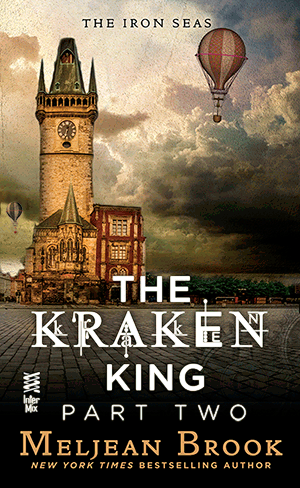Steampunk Q&A – Part 4
 As before, I’m answering questions that were posed in my “Any Questions?” post. The following are from Maili — and I’ve broken this up into two parts and put them out of order because a) she had a lot of questions b) my answers are long, and c) I still haven’t gotten to a scanner and made pictures of my maps.
As before, I’m answering questions that were posed in my “Any Questions?” post. The following are from Maili — and I’ve broken this up into two parts and put them out of order because a) she had a lot of questions b) my answers are long, and c) I still haven’t gotten to a scanner and made pictures of my maps.
This first one is out of order because I’m going to refer to this answer when I answer the others:
Did you explain the ‘punk’ part? I think that’s the core of all -punk genres. Cyberpunk = futuristic technology versus big brother, for instance.
To me, the ‘punk’ part is critical to steampunk, and includes some form of social/cultural criticism or commentary, and a challenge to the status quo. I think the criticism can vary from overt to subtle, and the issues taken up can also vary, but it should be there in any ‘punk’ genre.
Here’s the thing about steampunk, too — it’s set in historical times, and so there often is (simply by nature of writing from a twenty-first century perspective) some kind of criticism of historical social/class/gender/sexual/racial attitudes. It’s very, very difficult to write about something like child labor or social inequality without including some criticism of it. It’s easy. And, IMO, that sort of criticism/challenge to the status quo (while fine) is not the kind of “punk” that steampunk is about. Poking at those issues is like shooting monkeys in a barrel. “Slavery is bad. So is gender inequality.” No shit, really?
Whatever issue/challenge it is obviously will be part of the novel and the characters’ world, but the manner of the challenge/criticism and the resolution (if there is one) should reflect a more contemporary discussion — contemporary to the author and the readers. But I think that’s true of most science fiction: whatever is being explored or examined has much more to do with current events than it does with whatever time the novel is set in.
a) Why aren’t many other mainstream Steampunk books more racially diverse and LGBT-friendly like your The Iron Seas series?
Ha! Maili knows I can’t answer for other authors. In fact, I can’t even say much about many other mainstream steampunk books because I’m not reading them right now. So honestly, I don’t know. I can guess a few reasons, based upon anecdotal evidence and a general familiarity with comments around the blogosphere.
One reason is that writers might be afraid — afraid of screwing everything up and afraid of reader reaction if they do. I absolutely know this fear. I hate knowing that I’m going to offend people, because I am trying to get stuff right, but I still know I am going to portray some things badly or suggest something that I don’t mean to. Hell, I have already. And my next book probably will, too. And my next book. But despite knowing that, I’ll keep trying to get it right — because I don’t know about you, but I look around me and I see a lot of people who aren’t white and aren’t straight, and I’m writing a science fiction world that can be anything I want it to be, and I love science fiction that actually reflects the contemporary world, so I’m including it.
I’m censoring myself with my comments about the fear of sales/marketing fails, because frankly, I think it’s a chicken-egg problem.
But I also think this is a genre-wide problem, not just an issue in steampunk. I don’t know what to say. I can’t speak for other authors, only myself, and I can relate one little story from my recent signing in San Diego, where I was speaking with a reader and she thanked me for having Mina as a heroine. Thanked me. On one hand, I am so, so glad that Mina was a character that she loved, and that I didn’t screw that up for her; on the other hand, I’m horrified that including an Asian heroine is so rare in romance that I was thanked for it.
I think, in general, romances as a whole are doing better (and in general, that romance epubs are doing better than mainstream publishers, but I also don’t know if that is an issue of who is submitting where, or if it’s all about marketing, or something else, or a combination of everything). We’re not even close to reflecting contemporary reality yet, but I think that more authors are trying to. So, there’s that. It’s not much, but I keep hoping this trend continues, until it’s not a trend anymore, until it’s not even remarkable anymore.
Because you know what I want more than anything in the world? That by the time my daughter grows up and begins reading romances, she never EVER has to thank any author for including a character whose race is the same as hers.
b) Does it have to take place in Britain and the US only? Does it have to be 19th century, too?
I answered this in the other Q&A but I’ll say it again, because it needs to be said again and again and again, because I keep seeing the opposite being said otherwise in other places: No, it doesn’t have to be Victorian. It doesn’t have to be set in Britain or the U.S. It doesn’t have to be 19th century. It has to be steam. It has to be punk. The setting is up to the author.
c) Are H.G. Wells’s The Time Machine and Jules Verne’s novels like 20000 Leagues Under the Sea steampunk novels?
Nope. They are science fiction novels.
I know that they are often used as examples of steampunk — heck, I do it, too, because so many more people are familiar with Verne and Wells than with … well, any steampunk author that I can think of. I find myself continually saying, “It’s kind of like Verne or Wells.”
But they aren’t steampunk writers/their novels aren’t steampunk novels.
To me, the key difference is the direction of the writer’s gaze and speculation. Verne and Wells were looking forward into the future; steampunk authors are looking backward into history. Even though Verne, Wells, and steampunk authors are all using historical tech and imagining its future evolution, Verne and Wells were only bound by what they knew, not by future technological developments. Steampunk writers are informed by an entirely different technological history and are bound by that ‘steam’ threshold.
More tomorrow or Tuesday, depending on time.



